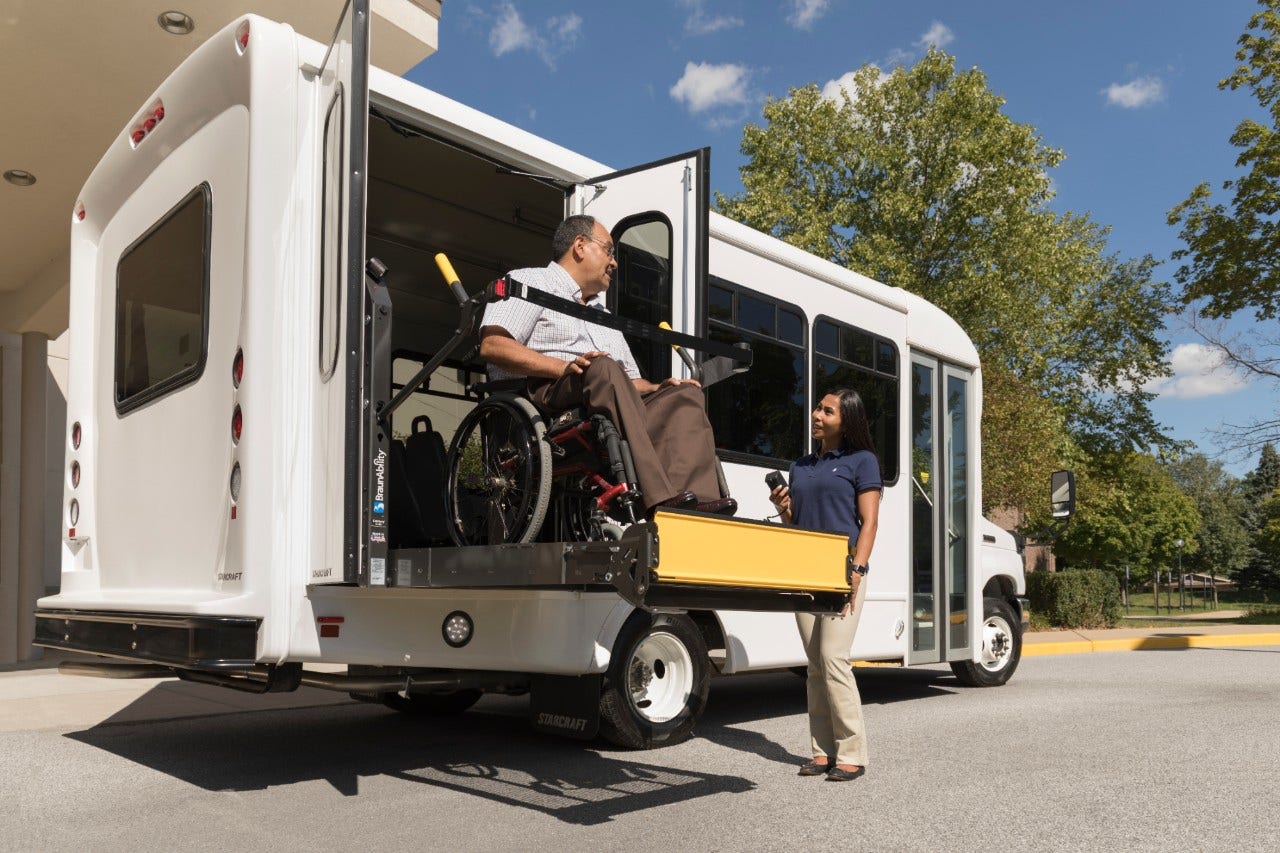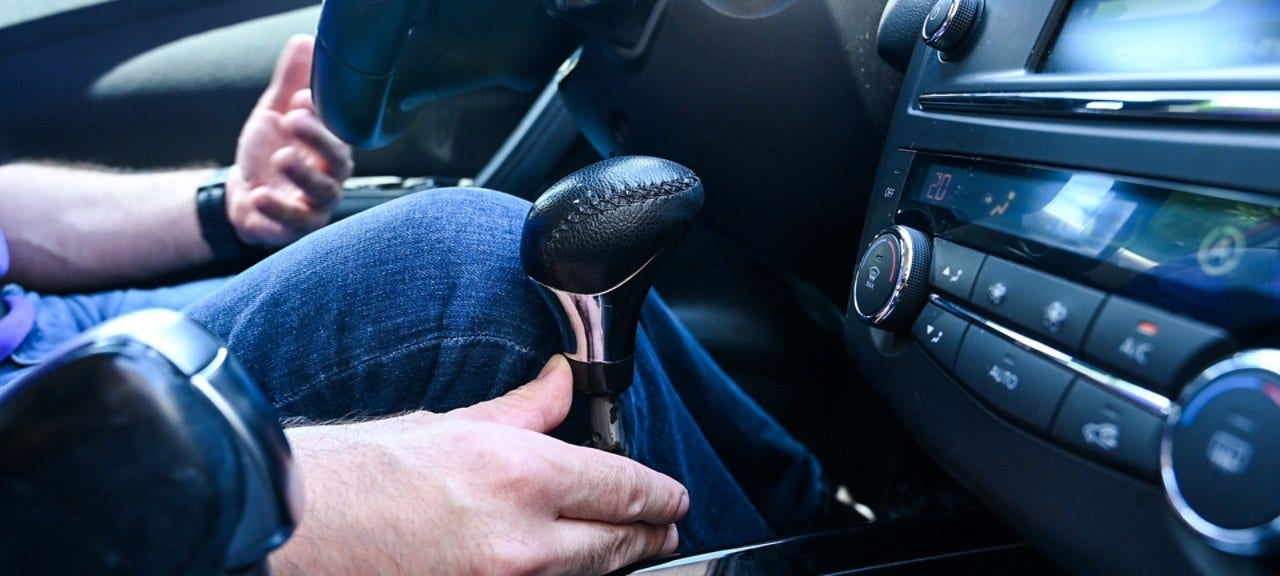
Rehabilitation Hospital Guide to Wheelchair Vans
After an injury, a person may wonder when they’ll be able to drive again, but before they can get behind the wheel, patients with mobility disabilities will need to undergo rehabilitation to gain independence. Whether a patient sustains a spinal cord injury or has a limb difference, rehabilitation hospitals can provide specialized care so those with mobility impairments can get on the road.
Your Patients’ Mobility After They’ve Left the Rehab Center
With varying disabilities among patients in rehabilitation centers comes varying mobility after leaving rehab. Each patient’s mobility will look different depending on their disability, individual goals, and mobility needs. For example, a paraplegic’s mobility, goals, and needs will look different than that of a quadriplegic. Varying levels of limb loss will also affect patients differently after they’ve left the rehabilitation center. Ongoing therapies are often needed to address changing mobility needs and goals of rehab patients.
Regardless of their abilities after leaving rehab, patients may wish to further their independence through driving. Certified driver rehabilitation specialists (CDRS®) can help disabled individuals find adaptive driving solutions. A CDRS® will evaluate a patient to determine whether they can safely operate a vehicle. If a CDRS ® determines an individual can drive with adaptations, they will prescribe necessary vehicle modifications, and train the driver to use any adaptive driving controls. CDRS®’ are certified by the Association for Driver Rehabilitation Specialists (ADED) and undergo continuous education to provide driver rehabilitation services to drivers with disabilities. After completing driver training, disabled drivers will have their unique vehicle modifications installed in their wheelchair accessible vehicle. Vehicle modifications should be installed by a certified mobility equipment dealer to meet the needs of the wheelchair user and ensure the safety of all vehicle occupants.
Accessible Vehicle Products and Services for Rehab Patients and Clients
Your local mobility dealer can provide multiple products and services to meet the needs of your patients and clients.
- New and Used wheelchair accessible vehicles: Both new and used wheelchair accessible vehicles are available to rehab patients. Each option comes with its pros and cons. New wheelchair accessible vehicles are typically more customizable, but come at a higher cost, whereas used accessible vans are less customizable, but may be more cost-effective.
- Wheelchair and scooter lifts: For those who cannot safely enter or exit a vehicle due to ramp incline, a lift is recommended. Wheelchair van lifts allow wheelchair and scooter users to remain upright and level while entering and exiting a vehicle.
- Seating: Some rehab patients may require assistance to transfer to and from their vehicle seat. In these cases, a transfer seat like the BraunAbility Turney Evo seat is a great option. Accessible vehicles may also be equipped with removable and folding seats to accommodate both disabled and non-disabled passengers.
- Hand controls: Rehab patients with lower limb mobility disabilities can often drive with hand controls. Patients should work with a CDRS to determine which hand controls are appropriate for their vehicle.
- Accessible vehicle rentals: For patients who have recently left rehab, renting a handicap van is a great way to determine which accessible van features fit their needs
- Financing: BraunAbility offers multiple financing options as well as vehicle protection plans and service contracts for your patients
Which Accessible Van Features Work for the Patient’s Needs?
Rehabilitation hospitals should work together with patients, certified driver rehabilitation specialists, and local mobility dealers to decide which handicap van features will work best for the patient and their needs. Some wheelchair users will drive, and others will be passengers. In both cases, several features can be added to meet the needs of wheelchair users and their companions.
Power or manual ramps
If the wheelchair user can deploy and stow a wheelchair ramp on their own, or, if they travel with a companion who can do so, a manual ramp may work best. For those who cannot deploy or stow a ramp on their own, a power ramp is recommended.
Rear entry or side entry
The vehicle entry point will depend on where the wheelchair user will sit. If the wheelchair user will drive, or sit in the front passenger seat, then a side entry van will work best. If a wheelchair user will only use the middle or back rows of seats, then a rear entry van is recommended.
If you’re unsure which accessible van features will work for a patient’s needs, contact a BraunAbility product specialist. Our product specialists will work with you one-on-one to find a vehicle that fits your patient’s needs.
Renting a Wheelchair Van vs. Buying a Wheelchair Van
Wheelchair users can either rent or buy a wheelchair van. For those who have recently left rehab, renting a wheelchair accessible vehicle is a great way to figure out which entry and ramp styles work best for individual needs. Once a wheelchair user has found an accessible vehicle that fits their needs, they may consider buying. An accessible vehicle is a costly investment, however, there are multiple options when buying an accessible van to meet a variety of needs and budgets.
How to Show Your Patients Driving Possibilities
Rehab hospitals can help their patients explore driving possibilities by:
Visiting a showroom or exposition:
Rehab hospital staff and their patients can find out more about accessible vehicles by visiting a showroom or an exposition like the Abilities Expo, where they can learn about mobility products, consult with experts in accessible vehicles, and hear from other handicap van users.
Test drive an accessible vehicle:
Accessible vehicles have lowered floors, and multiple types of accessible equipment. By test driving an accessible vehicle, physical and occupational therapists can familiarize themselves with the equipment their patients may need, allowing them to better assist their patients in the vehicle search process.
Keep in contact with a local mobility dealer
Rehab hospital staff can keep up to date with the latest mobility products by contacting their local mobility dealer directly.
Why Is It Important to Get a Wheelchair Vehicle from a Rehabilitation Hospital?
Rehabilitation hospitals do not sell wheelchair vehicles themselves. Instead, they work with patients and members of the National Mobility Equipment Dealers Association (NMEDA), including therapists, mobility equipment manufacturers, and certified driver rehabilitation specialists. These professionals provide one-on-one support and expertise when getting a wheelchair van. This personalized approach ensures disabled people get an accessible vehicle that will meet their needs for years to come. Whether you have questions about buying, renting, financing, or finding the best accessible vehicle to suit your needs, your local mobility dealer is here to help. Contact your mobility dealer today.
Important Considerations for Rehab Hospitals When Working with Patients
Mobility dealers are here to support rehab hospitals and their patients in the wheelchair van purchase process. When working with patients and mobility dealers, rehab hospitals should consider the following:
- Patient privacy: Your mobility dealer may ask questions about needs and limitations to determine which accessible vehicle features are right for the patient. These needs and limitations can be discussed confidentially. Identifying information regarding the patient is not required.
- Referrals: Rehab hospitals should refer patients to a mobility dealer when looking for expertise on accessible vehicles. When making referrals, the mobility dealer may need to be listed as a vendor. In most cases, referral spiffs cannot be sent to rehab employees who refer their patients to a mobility dealer.
- Requesting demos: Rehab hospitals can request demos for their patients, where patients and rehab hospital staff can look at accessible vehicles and adaptive driving options to determine what best suits the patient’s needs
- Further questions: No question is too small. If you are creating a long-term treatment plan for a patient, and you need to know about vehicle pricing, contact us. If you have questions about vehicle restraints for specific wheelchairs, we can help with that too.
The road to recovery can be long and difficult for rehab patients, but your mobility dealer is here to help. Contact your mobility dealer to learn more about accessible vehicles and driving possibilities for your patients.




